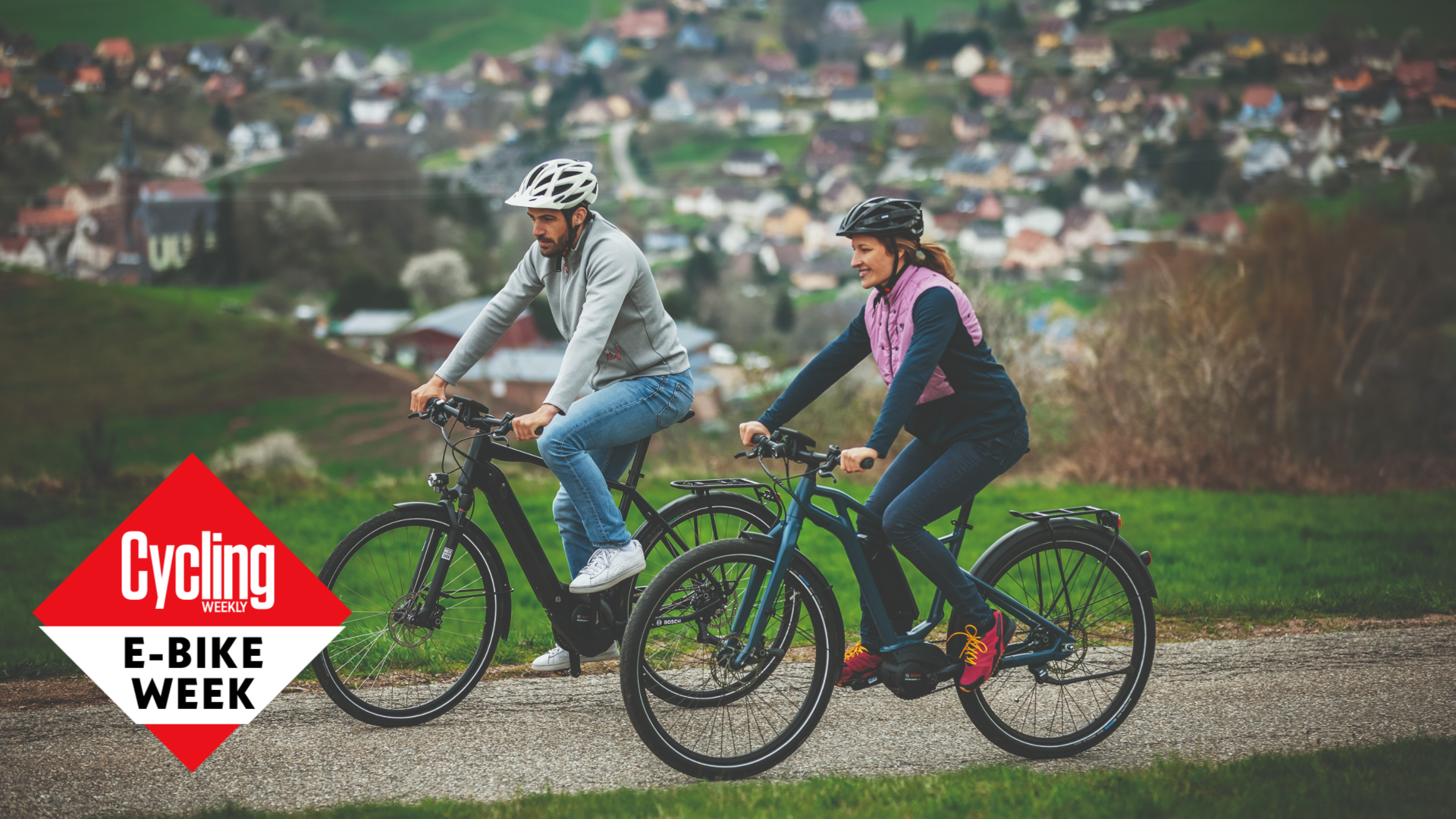Best electric bikes 2025 - models for every kind of rider
We select our favourite electric bikes to help you choose the right one for you
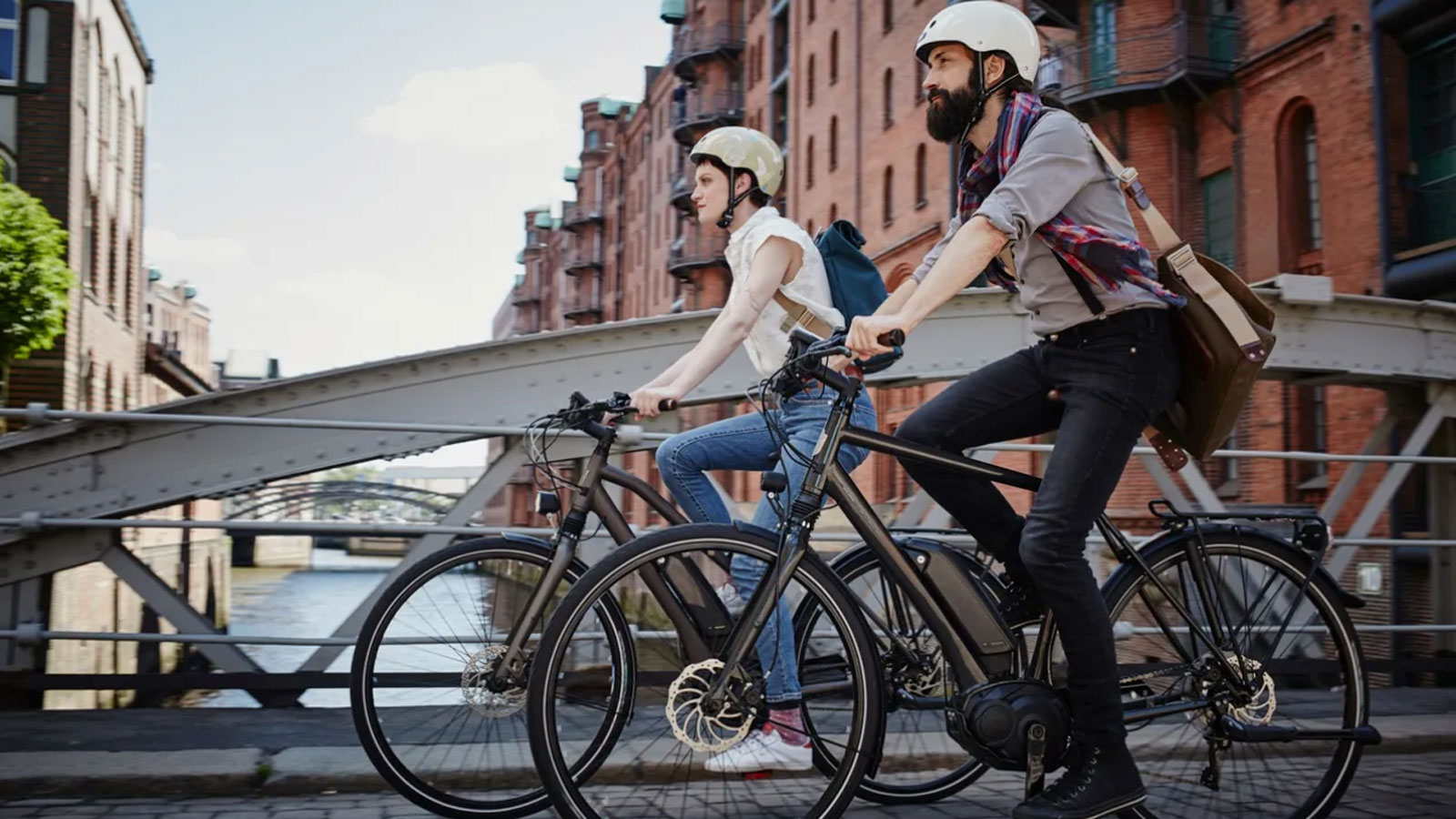
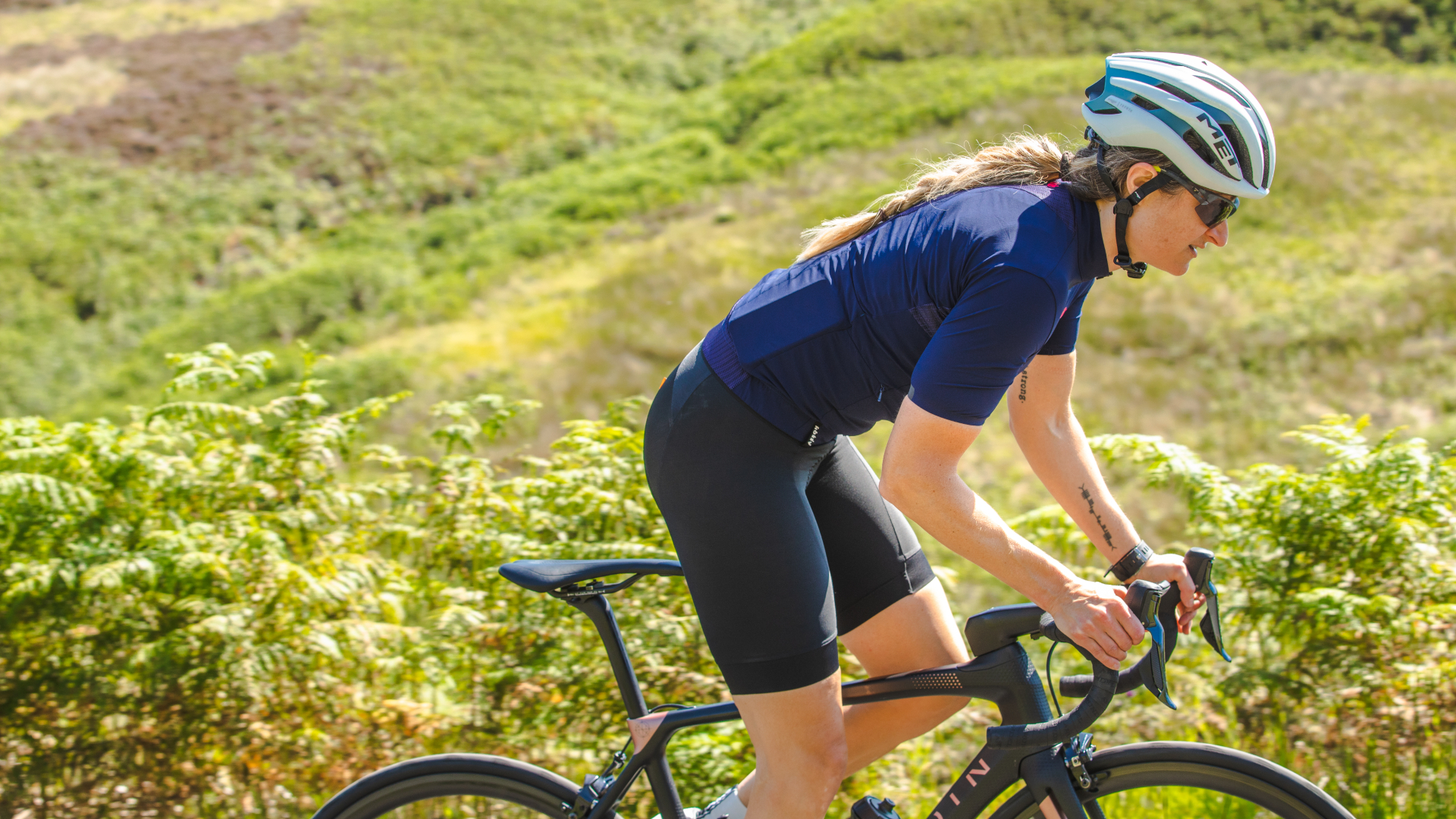
The growth in popularity of electric bikes means there are now more than ever to choose from. There are lightweight e-road bikes that don’t look too dissimilar from their acoustic counterparts, flat bar electric hybrids for leisure riding and commuting, and even electric folding bikes for those who lack space or undertake journeys that involve train and bus travel. All of which makes choosing the right bike for you less than straightforward. As such we have tested many different models and collated our top picks across the e-bike category below, including several models from the sections I mentioned above.
Additionally if off-road adventures are more your thing, we’ve also got a guide on the best electric gravel bikes, or if you just want something for the road, check out our best road bikes guide as well. Otherwise, read on for reviews of our favorites e-bikes and a guide on what to look for when you start your shopping.
The quick list
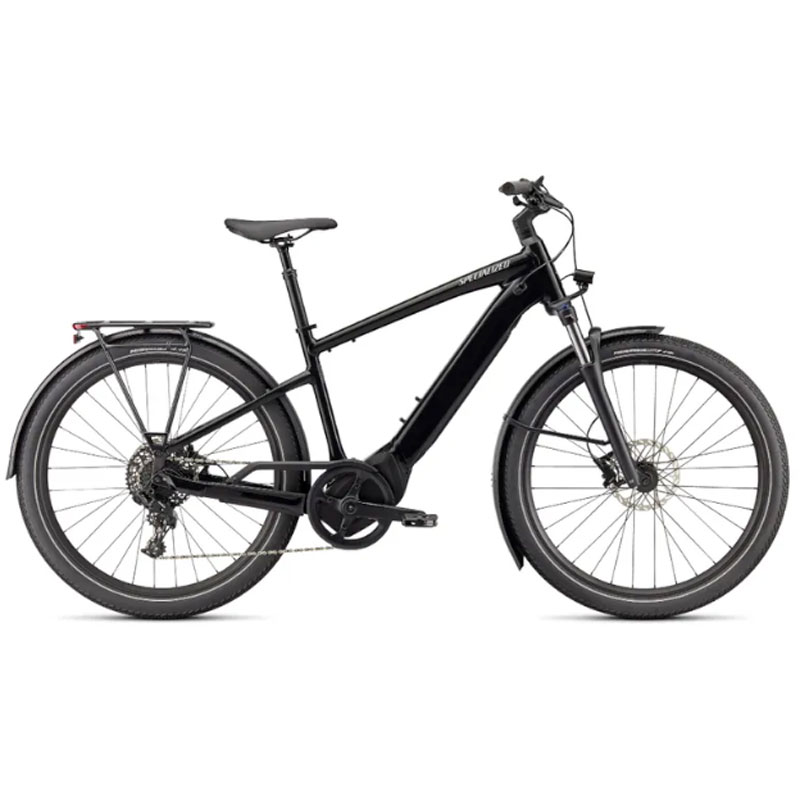
Fitted with fenders and a rear rack and equipped with suspension forks and wide tires, the Turbo Vado is designed to handle the rigours of the daily commute with ease.
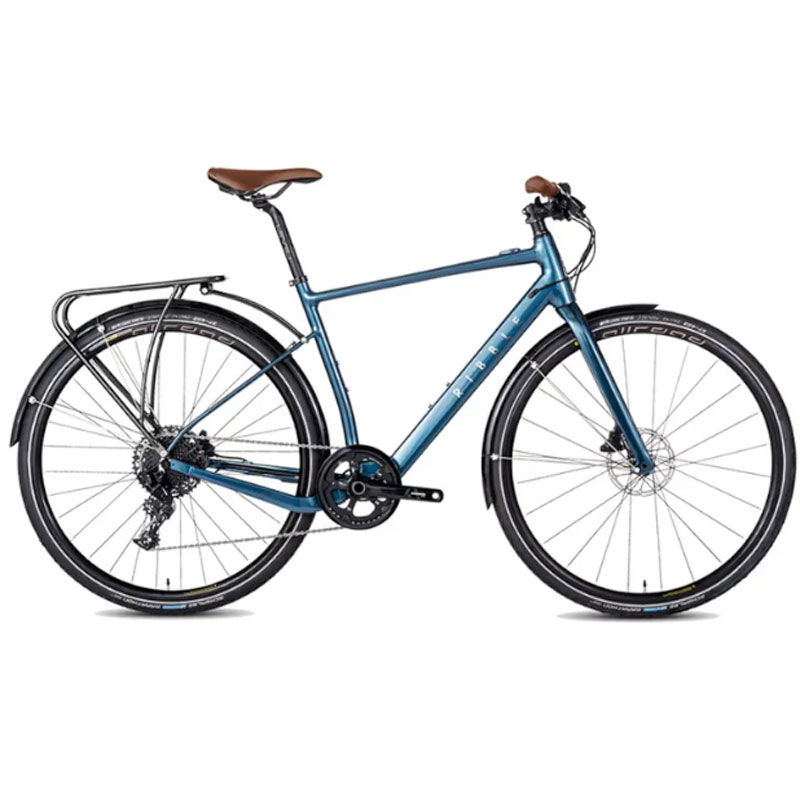
Ribble's Hybrid AL e delivers plenty of bang for your buck thanks to a quality Mahle rear hub motor, fitted fenders and rear rack and a reliable SRAM drivechain.
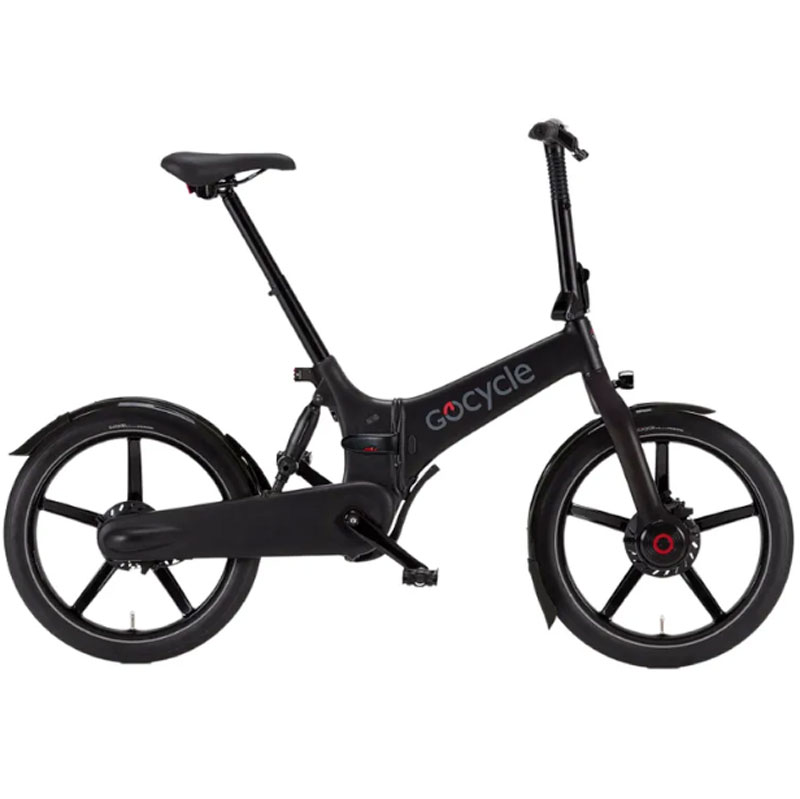
The 20" wheels and rear suspension result in a smooth ride, while the decent range, clever folding design and lightweight frame mean it's fit for purpose.
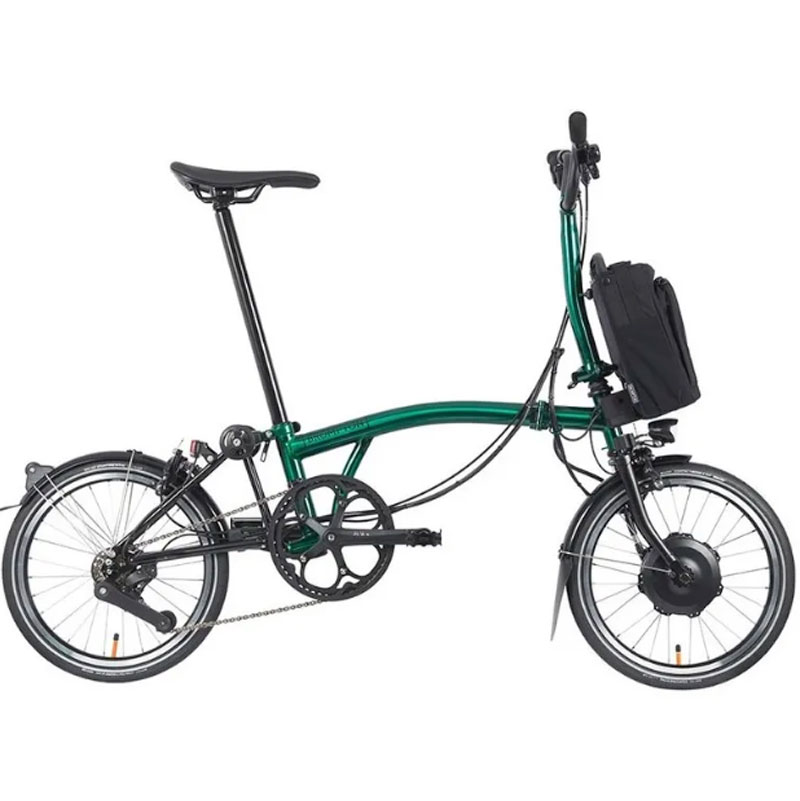
The front hub motor and 'battery in a bag' allows for Brompton's classic design to remain. The result is the same folding mechanism that's at the heart of the brand's popularity.
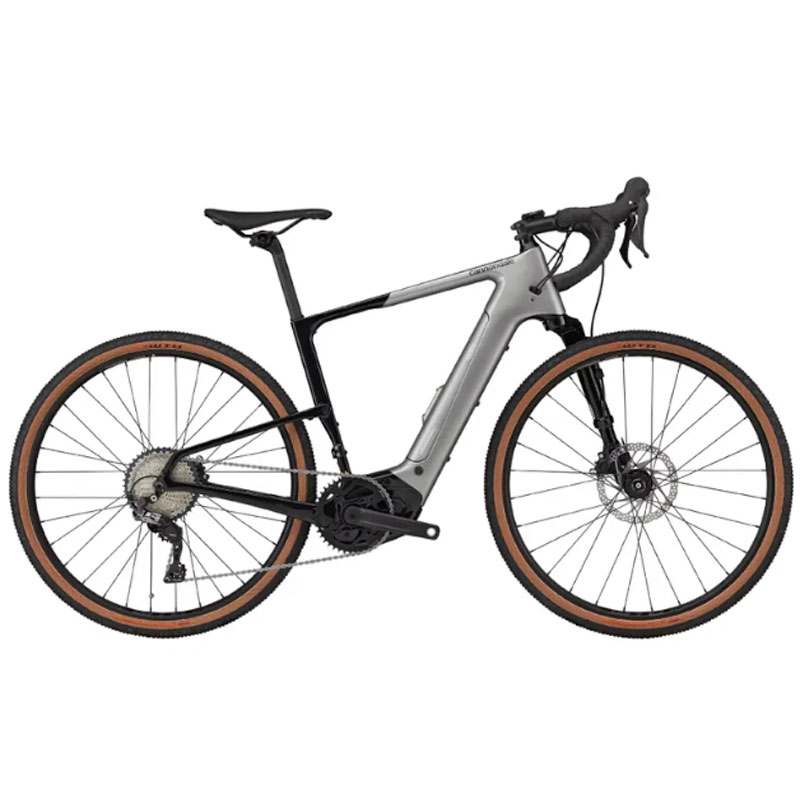
Combines Cannondale's signature suspension front and rear suspension systems with a mid-drive Bosch motor for bags of fun, both on and off-road.
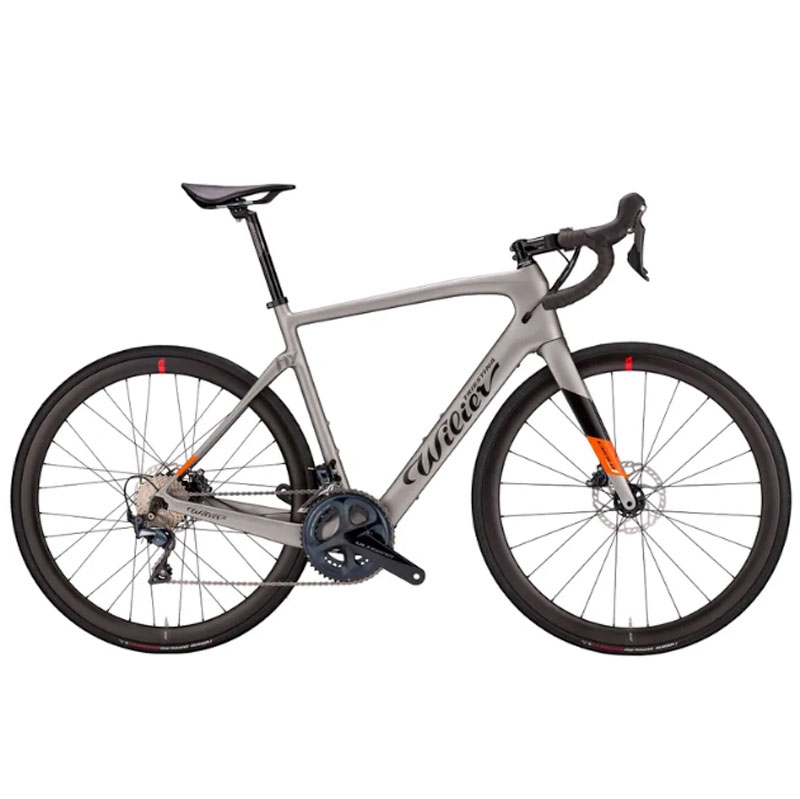
The Cento1 Hybrid uses a rear hub motor to keep the weight down, helping to create an e-road bike that looks and rides much like a regular road bike.
Our pick of the best electric bikes 2025
Best hybrid e-bike
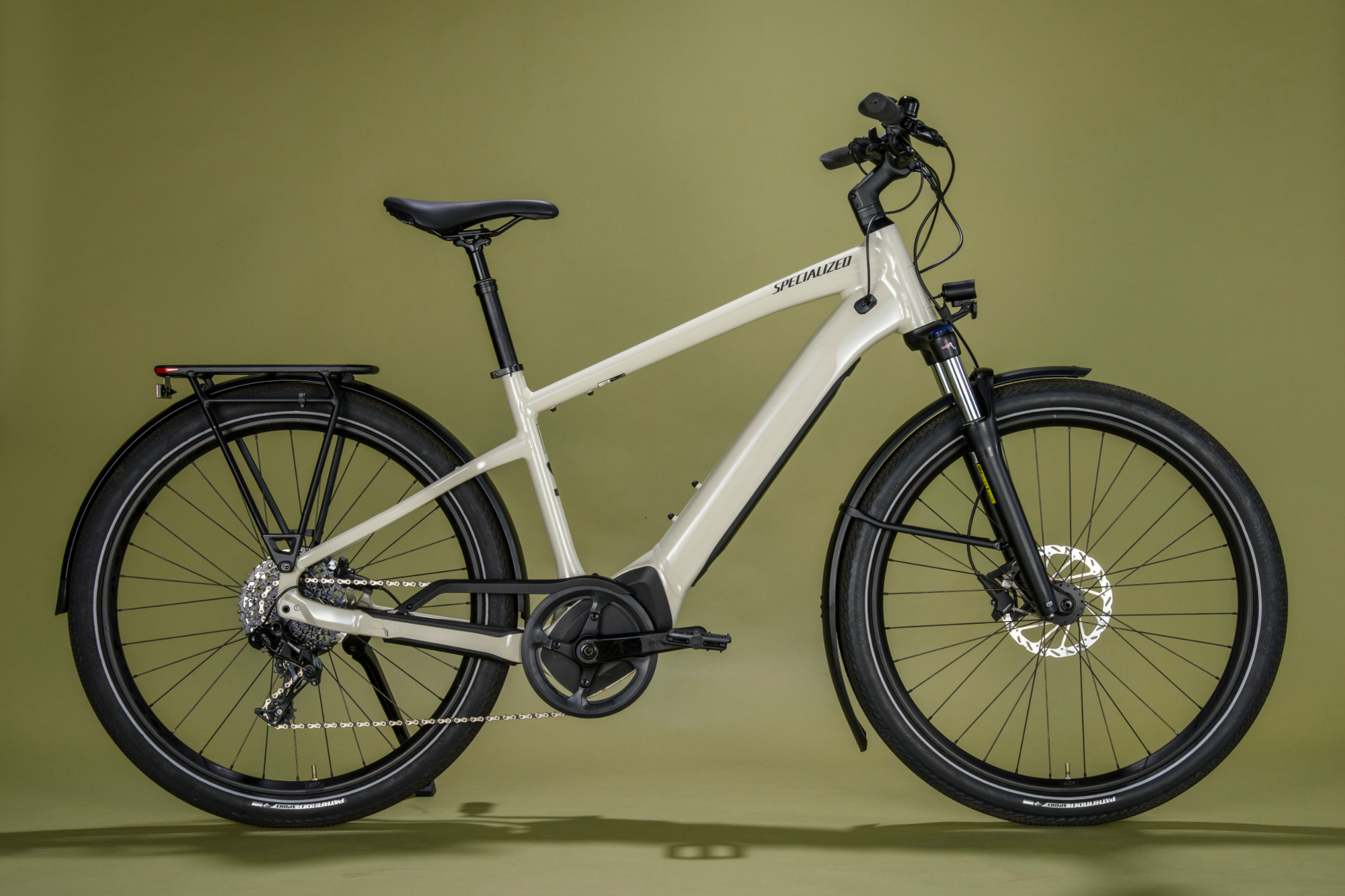
The Turbo Vado is commute ready thanks to fenders and a rear rack
Specifications
Reasons to buy
Reasons to avoid
A fun ride that’s great in urban environments but also provides a confidence-inspiring ride on rougher terrain is what the Specialized Turbo Vado is all about.
If you're after a bike that is fully integrated with bike lights, fenders and rack (27kg capacity) as well as security (on the App & removable battery using a key), then this represents a straight forward choice. Only the weight, and to a lesser degree cost, need consideration.
We found the 70Nm/250W custom-tuned motor applies power seamlessly and powerfully as soon as you push down on the pedals. Range is excellent too - 95-130km / 60-80 miles should be easily attainable using the default settings of "Sport' and '50% power'. There is an Eco mode as well as Turbo, so if you're careful you can expect much greater range.
It is a heavy machine at 60lbs/ 27kg, so not easy to lift, so anyone needing to navigate steps in or out of the bike's storage place will need to take this into consideration, but aside from that we found the Specialized Vado Turbo to be a joy to ride.
Best value e-bike
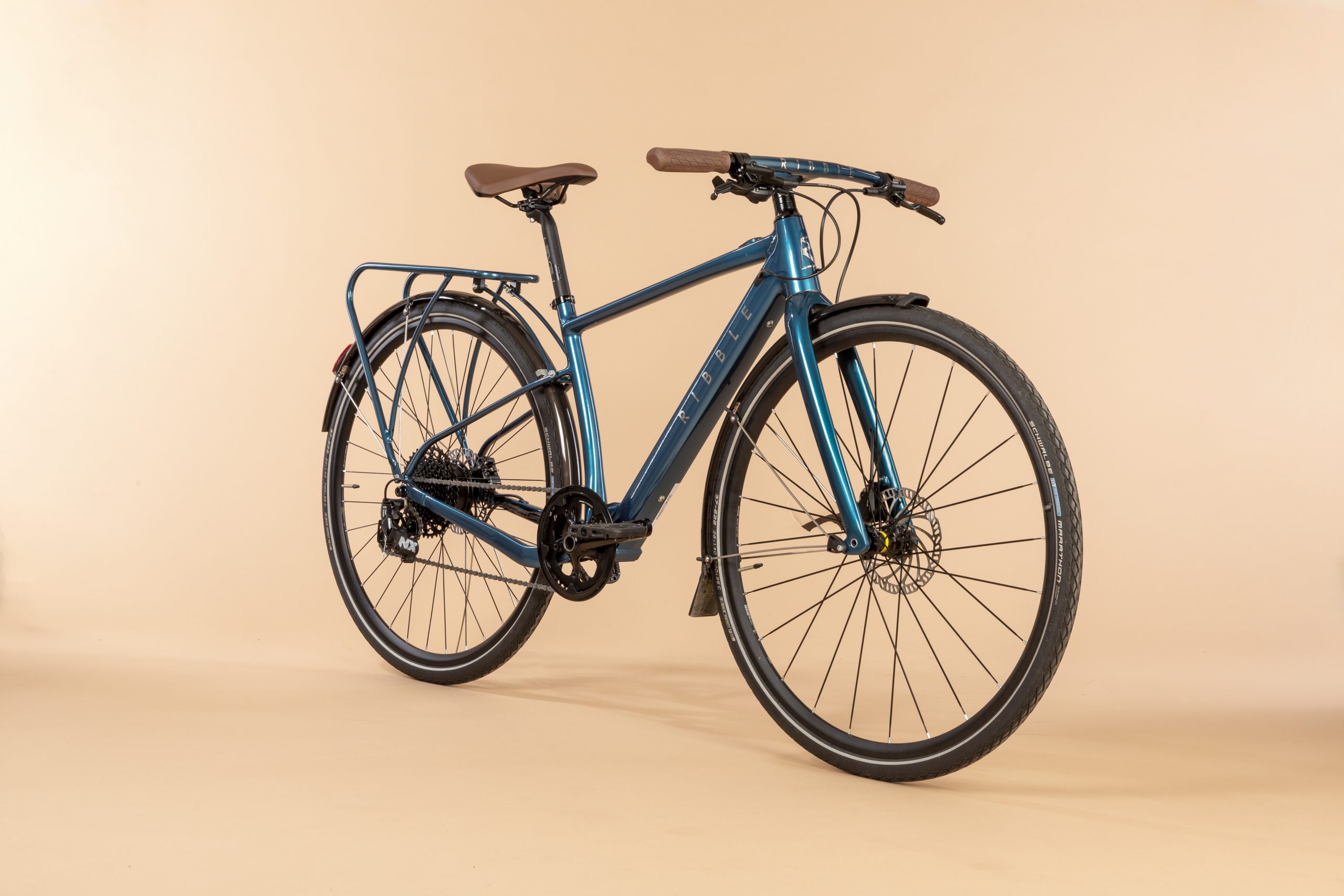
Ribble Hybrid AL e looks just like a regular hybrid
Specifications
Reasons to buy
Reasons to avoid
The Ribble Hybrid AL e is a road-going hybrid bike that’s equally at home on gravel paths and trails, with a comfortable and confidence-inspiring upright riding position, so great for returning or newbie riders.
For us, from a looks perspective, we think the bike is one of the best hybrid bikes we've ever come across, with the design hiding away the motor incredibly well, although we were a little sad that adjusting the seat post left behind scratch marks. The fully loaded package includes fenders (mudguards), lights and a rear rack making it perfect as a daily commuter or for ditching the car when going to the store, although we did find these a little rattily on test.
The Ebikemotion motor delivers its power smoothly and efficiently and offers long-range in between charges, making the Ribble far more than just an A to B bike. Understandably it doesn't perform in the same way as the Canyon Grail:ON in terms of fast and tight torque, but tap along and it will tick over nicely, taking the top off any strenuous rides.
With all the added extras as standard and classy looks, the Ribble Hybrid AL e is a great electric bike for the money. Indeed if you want more value bikes for consideration, we have guides on the best budget road bikes, and best budget gravel bikes as well.
- Read more: Ribble Hybrid AL e electric bike full review
Best electric folding bike
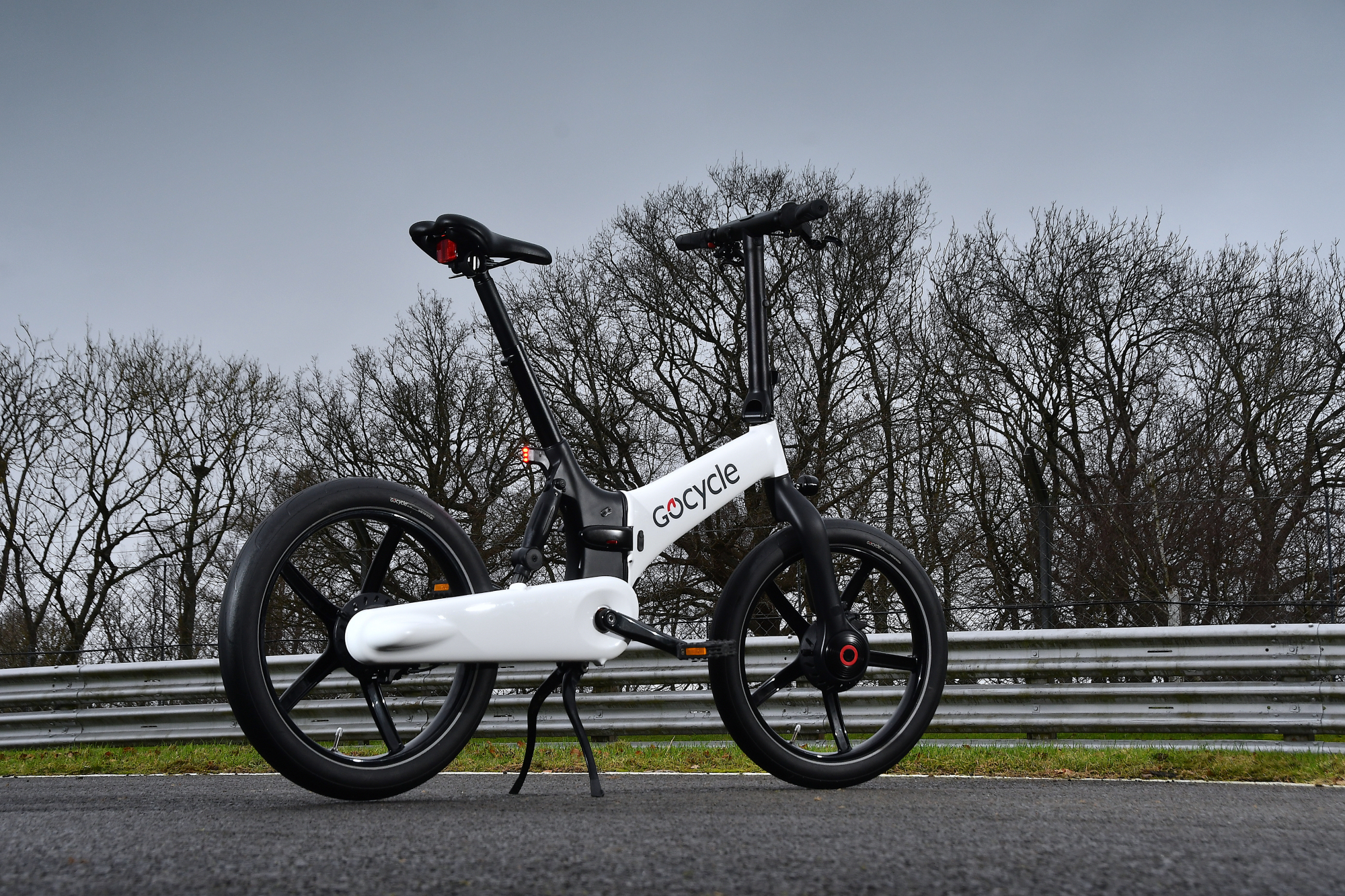
Gocycle G4 folding e-bike is easily portable once folded
Specifications
Reasons to buy
Reasons to avoid
The G4i is a solid choice for a commuter, with the option to add many accessories such as mudguards (fenders), a front and rear pannier rack, integrated lights, lock holster and a travel case. The design folds in half, so that you can push it on its wheels rather than needing to carry it, or you can fully fold it into a compact package. There's built-in rear suspension, concealed cabling and a fully enclosed drivetrain. This makes sense, given that commuting year round usually means cycling in the wet at some point. The G4i utilizes a Shimano Nexus 3 speed internally geared hub. With 1” of elastomer suspension and 2.35” wide tires, it is one of the more comfortable small wheelers.
It features a discreetly integrated USB port on the handlebar, enabling owners to charge their phone or other small devices from the bike’s battery when not in use - although we found the quality of the integrated phone mount didn't quite match that of the bike itself. The same goes for the LED display, which we found to be rather basic - although the information it provides is useful.
The 500W (250W in the UK/EU) G4 electric motor and 375Wh Lithium-ion battery is claimed to provide a range of up to 80km (50mi), but the most we managed to get out of it was just 44km (27mi). To be fair, that was in one of the more 'assisted' modes and we always had the daytime running lights on - and the city of Bath is well known for its brutally steep hills.
The bike is available from 17.6kg / 38.8lbs. However, as the weight is centred low on the frame, this at least makes the ride more stable. The folding mechanism has been improved since previous versions and can be quickly collapsed into a small package - Gocycle says this can be done in as little as ten seconds; we found it was closer to 20.
Best lightweight electric folding bike
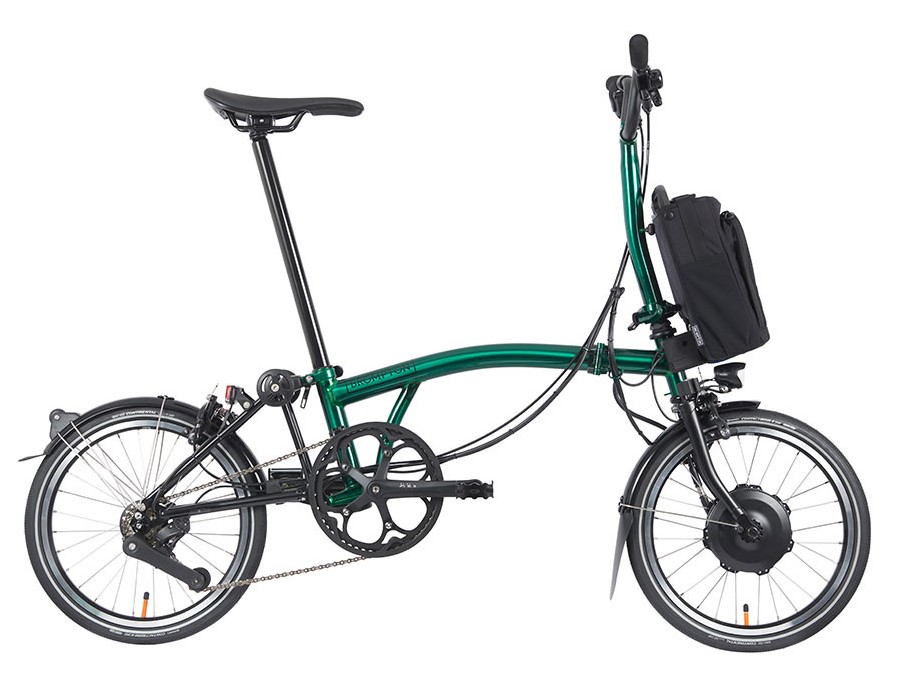
The Brompton Electric P Line has a titanium rear triangle to save weight
Brompton Electric P Line
Specifications
Reasons to buy
Reasons to avoid
Brompton has had the Electric C Line in its range for a while. The Electric P Line takes the same electric drive tech, but packages it in a lighter weight model thanks to the titanium rear triangle in place of steel, dropping the weight to a claimed 34lb.
The removeable battery pack in a backpack makes the bike easier to carry than that headline weight would suggest as well. It's easy to clip it back onto the frame when you're ready to roll but, as with the standard Brompton, the high foldability remains, making the Electric P Line easy to store.
The Electric P Line has Brompton's clever four-speed gearing system. It comes with an ingenious two-piece derailleur which has been designed to fit inside the narrow fold - one part has a spring mechanism with one jockey wheel that is mounted and tucked under the chain stay, and the second part is a fixed chain tensioner that’s mounted below the rear drop out.
We did find however that the rear derailleur was a little fiddly to adjust and we'd have liked a smaller bottom gear, but both are relatively minor issues. This remains one of the best folding bikes on the market.
Best for off-road
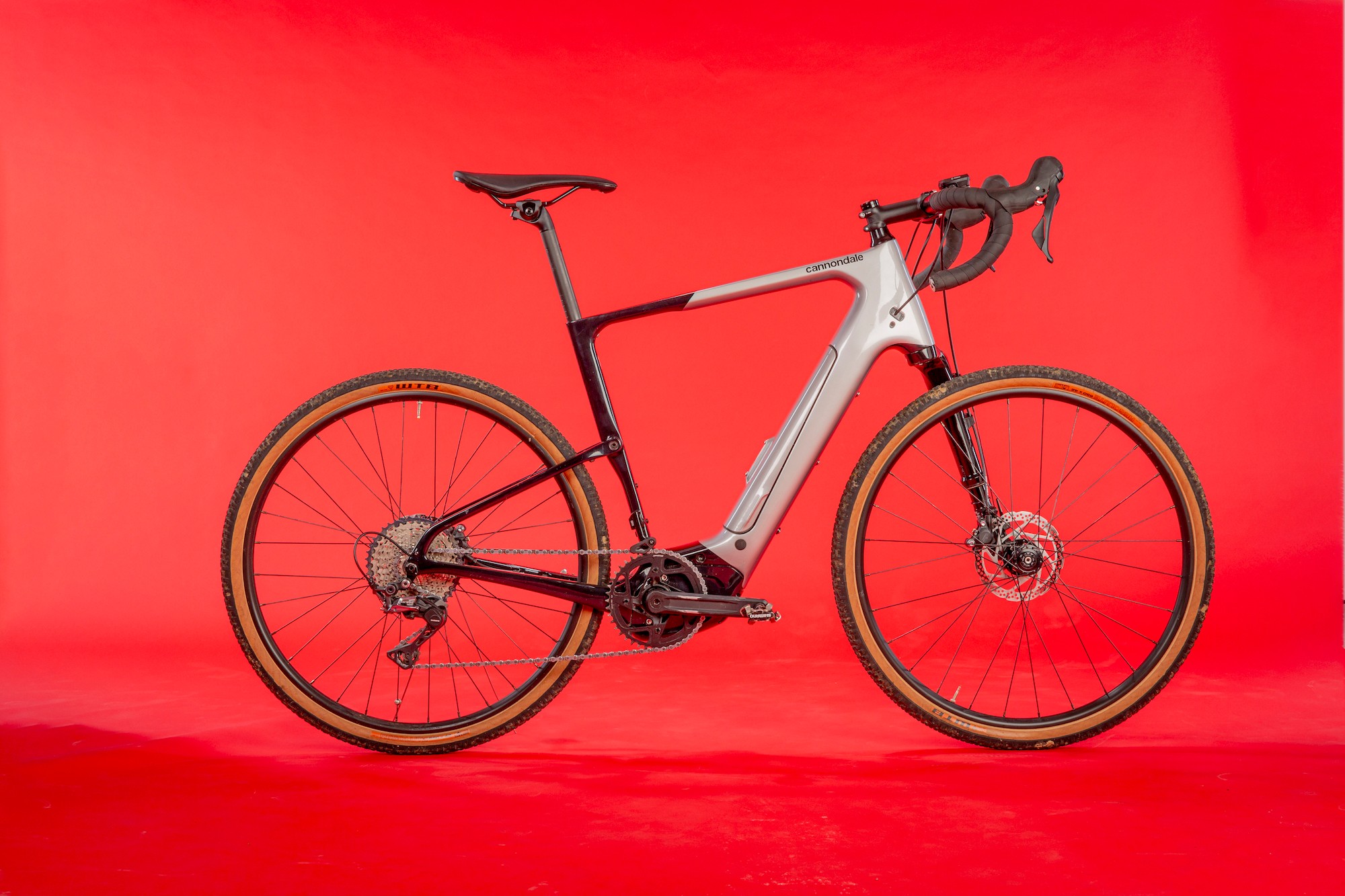
The Cannondale Topstone Neo Carbon 3 and its signature Lefty fork
Specifications
Reasons to buy
Reasons to avoid
The Cannondale Topstone Neo Lefty 3 is an electric gravel bike - that means it blends drop handlebars with burly tires and suspension, so it's designed for on and off-road riding.
Running on 650b wheels keeps the rear end tight and nimble for almost any terrain, although this is an area where you might consider a future upgrade as the WTB ST i23 rims don't quite match the capability of the rest of the bike. It'll still shock you with its power delivery (hold on to your hats), but the looks are best described as an acquired taste.
It'll leave you in a similar giggly mess as the Canyon Grail:On CF 8 eTap does, just pure grin inducing fun on any ride. In fact, on test it proved to be a bit of a handful, and possibly provides too wild a ride for a lot of riders. If you can learn to love the looks, and tame the beast of the torque you honestly will struggle for more fun on two wheels.
This bike is unrivaled in its class in terms of motor performance while the suspension adds another layer of capability to the package and blurs the gravel/MTB divide even further.
- Read more: Cannondale Topstone Neo Lefty 3 full review
Best road e-bike

Wilier Cento1 Hybrid Ultegra Road E-Bike has a concealed battery and hub motor
Specifications
Reasons to buy
Reasons to avoid
Gaining a much-deserved Editor's Choice award, the Wilier Cento1 Hybrid is the e-bike for the road riders who still want the feel of a race bike. The Cento1 Hybrid is a good looking lightweight machine, which will assist you up those tough climbs, with plenty of power on tap.
On test, we found the supporting ebikemotion system, which is smartphone and PC app friendly, a doddle to use, with automatic syncing to Strava.
Some riders will love the automatic assistance, as it will immediately kick in when the going gets tough. However, this can be a pro or a con, depending on your ride assistance preference. If you would rather be the master of your own electrical deployment, then you might find the auto-assist a tad frustrating and just a little over torqued.
It's not the cheapest of bikes by any stretch, and the Ribble SL e could almost go toe to toe, but the Wilier is the no compromise option, which is reflected in the price tag.
FAQs
Why would you buy an electric bike?
There are a whole host of reasons why you might want to invest in one of the best electric bikes. Perhaps you have to travel with lots of cargo, and the added power can mean the difference between using a car or still spinning your two legs.
Or maybe you want to start commuting to work, and an electric hybrid could be a great option for helping you cover the miles, without turning up at work in a sweaty mess and in need of a shower.
The benefit is obvious: less effort = less sweat. Hauling heavy luggage is an option, and you can often even keep pace and feel more comfortable in traffic. A hybrid e-bike with a rack and fenders and you've got a seriously practical bike that can replace many a car trip or having to use public transport.
You might be recovering from injury or illness and the added boost of a motor might help you get back out there again. Or it might simply be the case that you're not as young as you once were.
It is absolute hearsay that electric bikes don't provide an exercise benefit, you do still get a workout when riding an electric bike.
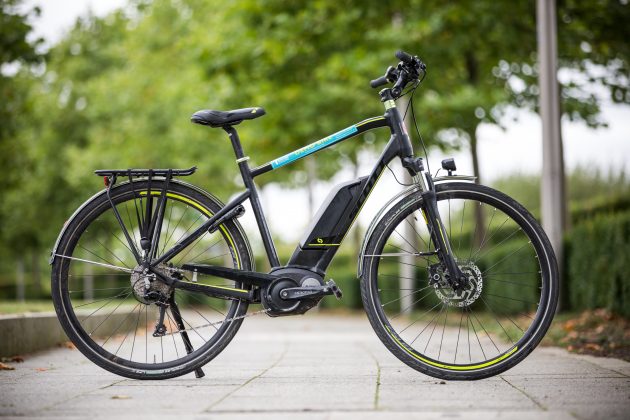
Scott's Hybrid uses a mid-drive motor
Are electric bikes legal?
The biggest difference between an electric bike and a motorbike is that the e-bike can only assist its rider, its motor cannot be the sole source of power for the bike. To clarify, in order for an electric bike to be legal, in many countries it can only assist a rider up to 25km/h (that's roughly 15.5mph). This applies to most of Europe and Australia — if you live in the US, keep reading.
Outside the US the motor inside the bike can only be a maximum of 250w and cannot be operated by a throttle like you'd find on a motorbike. Which does mean you'll have to use your legs!
The rules in the US are a bit more difficult to follow as the laws can vary state to state, and federal law surrounding e-bikes may say something different again.
The Bicycle Product Suppliers Association has sought to clear up some of the confusion, slotting e-bikes into a three-class system, all of which are limited to 750-watt motors.
The laws surrounding where and who can ride which class of e-bikes also varies state to state, but the TL:DR version is class 1 and 2 are permitted anywhere bikes are allowed, and class 3 are okay on roads and in bike lanes, but not multi-use paths, and have rules surrounding helmet use and minimum rider age. Thankfully the lovely folks over at People for Bikes have a handy guide that breaks the rules up by state.
Class 1: the motor only kicks in when the rider is pedalling and is limited to 20mph
Class 2: The motor is limited to 20mph and can provide assistance whether or not the rider is pedalling
Class 3: the motor provides pedal assist, is limited to 28mph and must be equipped with a speedometer.
What types of electric bike are available?
Most e-bikes come in the form of a Pedelec or pedal-assist, which monitors the input of a rider and assists as much as possible up to the region-specific top speed.
Less common are Twist-n-Go models, which allow riders to operate the input of the motor from a switch (or even a throttle). Most places classify these as a moped and you may need a licence, insurance, and a full helmet to ride them.
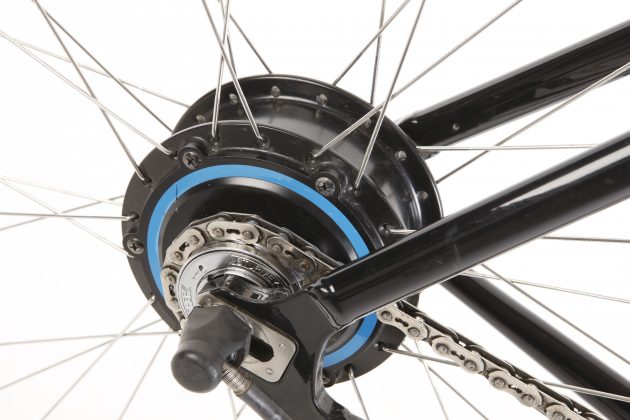
A hub mounted motor
What are power and torque?
The peak output of an electric bike is normally expressed in two measures. The power output of the motor is measured in watts. Most electric bikes have a maximum continuously rated output of 250 watts, as that's the power that regulations allow in many countries. Their peak power may be higher than this - think power required to get you started from a standing start.
Torque is the turning effort that the motor can add to your own pedalling. It's measured in Newton-metres (Nm).
Torque output varies considerably between motors. Lower priced electric hybrid bikes and many folders may have a torque output of around 40Nm. That's also the power output of the motors on some electric road bikes, where the motor is designed to add extra power to assist a fitter rider rather than o pull you up a hill.
Mid-range motors, such as are found on many electric city hybrids, and some electric road bikes typically have outputs of 50Nm to 65Nm. Electric mountain bikes and some electric gravel bikes may have torque outputs of 90Nm or more to give plenty of grunt when climbing steep off-road inclines.
Where should the motor be placed on the best electric bike?
There are really only three options for e-bike motor placement: either on the front wheel, the back wheel or the cranks.
Placing the motor at the cranks offers much better weight distribution, which makes the bike more stable — a key consideration for both road and mountain bikes.
Hub based motors, found in the rear wheel, are usually lighter, so you're more likely to find them on electric road bikes. Motors in the front wheel are a lot less common, but you may find them on some hybrid e-bikes and folders.
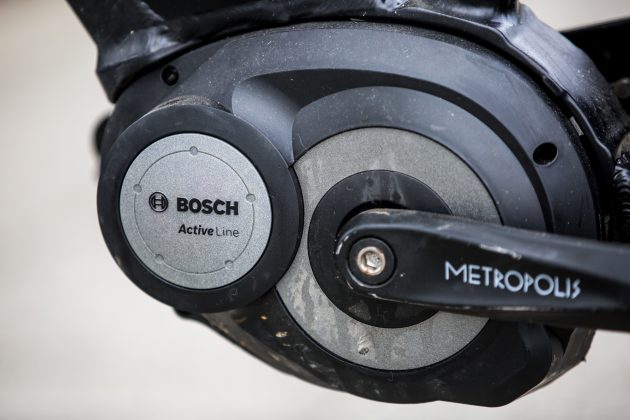
Most motors are now placed around the bottom bracket for a better distribution of weight
How far do the best electric bikes go?
Another consideration worth thinking about is electric bike batteries. Generally speaking, like motors, you get what you pay for. No battery will have infinite power, or be totally invisible, even on the best electric bike - but the more you spend the longer the range/ the more subtle its placement.
Battery capacity is measured in both watts (watt-hours, Wh) or amps (amp-hours, Ah). In most cases, an e-bike's battery capacity lies between 250Wh-600Wh or 7-10Ah.
Typically, you should get around 800 charge cycles from the best electric bike lithium-ion battery before you'll need to replace it.
How far you can go on a single charge depends on range of factors, including the terrain, but a rule of thumb you can expect a riding range of anywhere between 25 and 75 miles of run time on a full charge. Although be warned, the more assistance the bike gives, the more power it will draw from the battery.
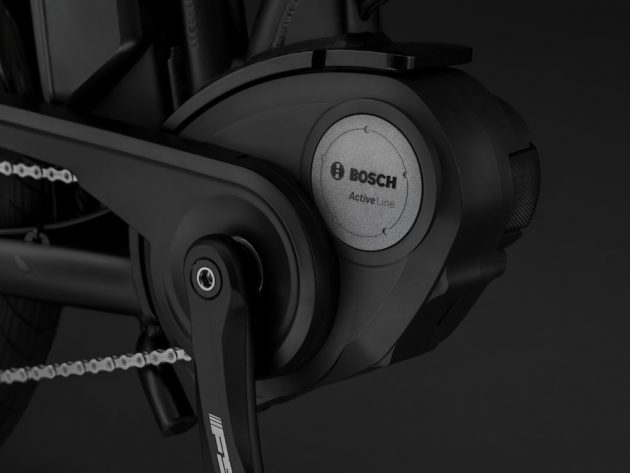
Bosch is becoming a big name in the e-bike world
What components do the best electric bikes have?
E-bikes do have slightly different components to standard bikes, the obvious ones are the battery and motor.
In terms of motors, the big names are Bosch and Shimano. Shimano Steps was the first e-bike specific groupset from the Japanese giant and it features a mid-drive electric motor, as well as integrated electric shifters and a torque sensor to smooth out the ride a little.
Bosch has really embraced the electric bike market and its range of eleven different motors offers a variety of power assistance depending on how much you're willing to spend and the type of riding you're doing. Its models have motors geared to more leisurely riding, more performance-oriented cycling or cargo moving applications.
Other brands such as Fazua, TQ and Mahle ebikemotion are common on lightweight e-road bikes, and these systems have done well when reviewed, so come recommended. Budget electric bikes often use Bafang motors.
The best electric bikes are likely to come specced with some form of hydraulic disc brakes. The added speed and weight of an e-bike will definitely warrant the extra stopping power.
Other areas that can differ are tires, which tend to be fatter, even on the road bike options, anywhere between 32mm and 40mm of rubber is most common on the hybrid options. The extra wide tires will help absorb the impacts of the heavier frame as well as providing more grip and stopping power to balance the extra weight and speed.
The more expensive, lightweight carbon road electric bikes do now come with leaner 28m tyres, perfect for keeping up on the club run.
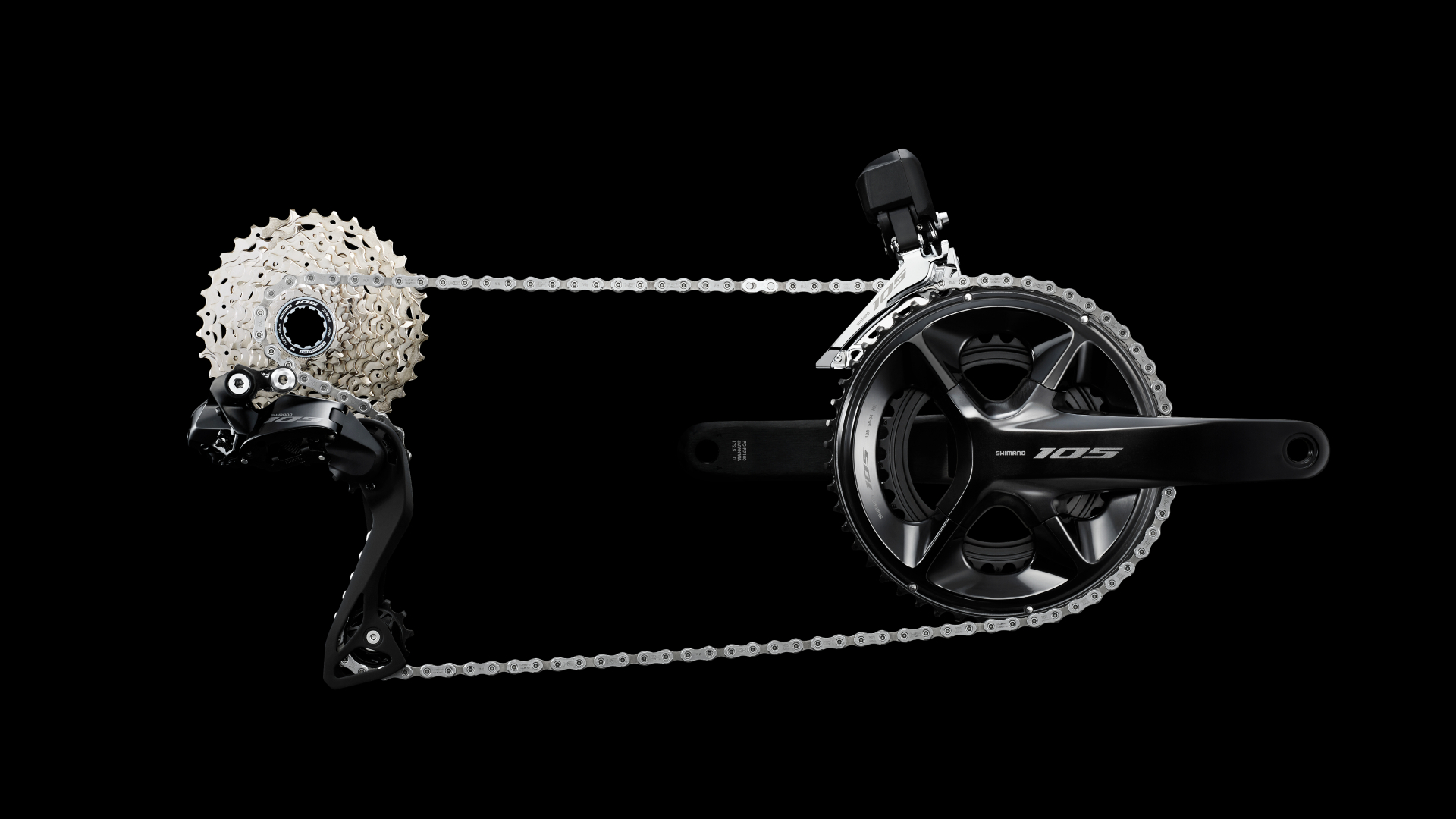
Most electric road bikes will come with a normal groupset
Meet the testers

Paul started writing for Cycling Weekly in 2015 and since then he’s reviewed hundreds of bikes and thousands of other pieces of cycling equipment. He’s been cycling for a lot longer than that though and his travels by bike have taken him all around Europe and to California. He’s been riding gravel since before gravel bikes existed too, riding a cyclocross bike through the Chilterns and along the South Downs.
Paul reviews both bikes and equipment for Cycling Weekly and has 40 years of riding under his belt across a variety of disciplines including road riding, commuting, a self-supported Land's End to John o' Groats trip, XC mountain biking and several Polaris Challenge two-day events. Naturally for a reviewer he loves bike and kit design and has even fillet brazed a couple of framesets himself.
How we test
Where we've been able to link to a review, it means that we've put the bike through its paces. This means that we've ridden it over varying terrain and distances to assess it's performance across a range of factors. For e-bikes this typically means that we'll have considered the quality of the motor and battery, from ease of use to charging time and range, while with regards to folding e-bikes we'll have also tested the folding mechanism for ease of use as well as the general suitability of the bike for commuting purposes.
Like regular bikes, we'll also consider the ride quality and the choice of components and how they impact key areas such as comfort, gear range and braking.
Where we haven't yet had the chance to review an item, we're still confident in recommending it as one of the best, because we either know the brand really well, and have probably tested another product or the previous version and can still happily recommend it as one of the best.
Get The Leadout Newsletter
The latest race content, interviews, features, reviews and expert buying guides, direct to your inbox!
Hannah is Cycling Weekly’s longest-serving tech writer, having started with the magazine back in 2011. She has covered all things technical for both print and digital over multiple seasons representing CW at spring Classics, and Grand Tours and all races in between.
Hannah was a successful road and track racer herself, competing in UCI races all over Europe as well as in China, Pakistan and New Zealand.
For fun, she's ridden LEJOG unaided, a lap of Majorca in a day, won a 24-hour mountain bike race and tackled famous mountain passes in the French Alps, Pyrenees, Dolomites and Himalayas.
She lives just outside the Peak District National Park near Manchester UK with her partner, daughter and a small but beautifully formed bike collection.
-
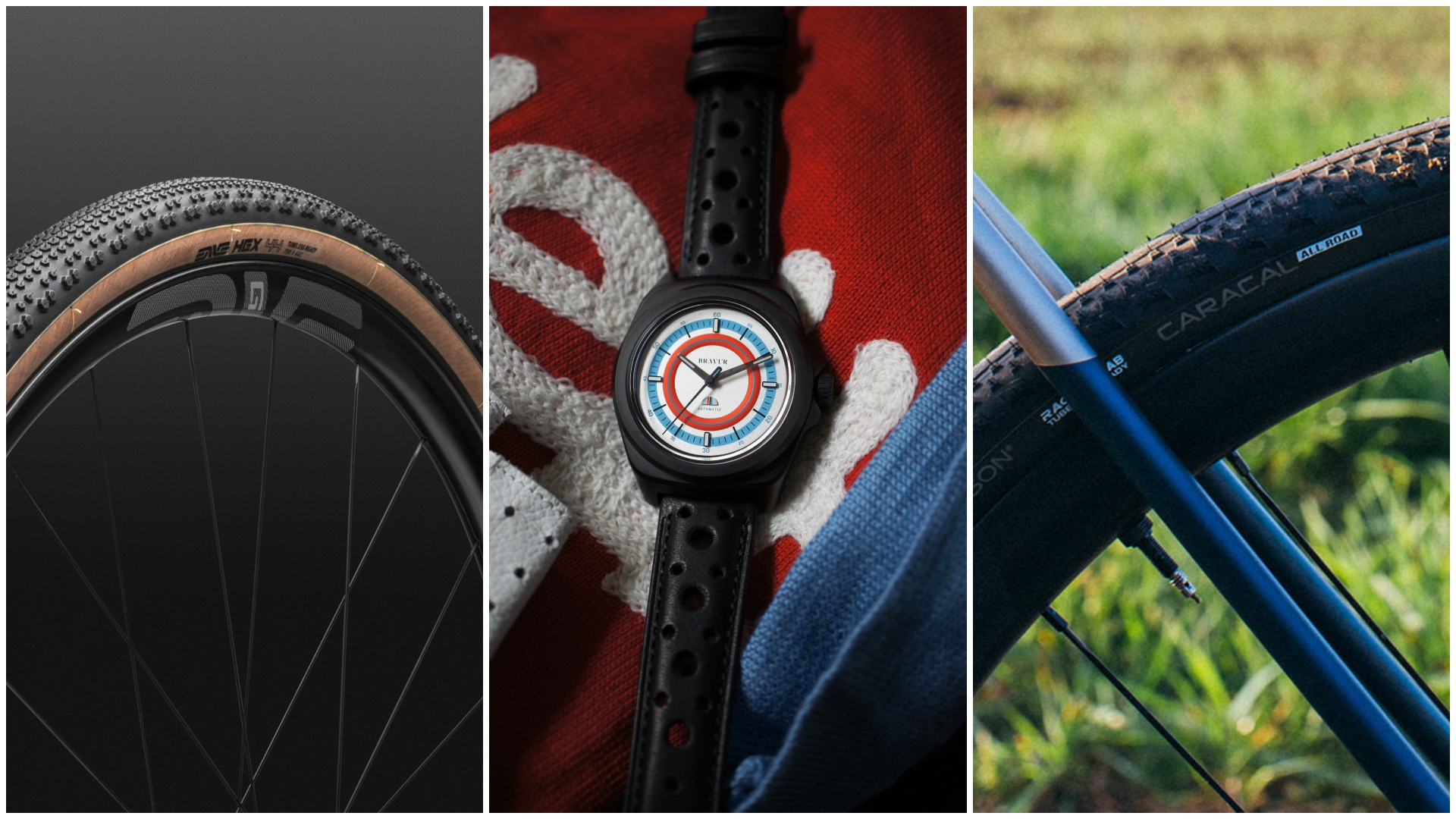 Tech Roundup: A gravel bike with 57mm tyre clearance, a not-smart, but very smart watch for cyclists, and new rubber from Enve, and Hutchinson
Tech Roundup: A gravel bike with 57mm tyre clearance, a not-smart, but very smart watch for cyclists, and new rubber from Enve, and HutchinsonAllied's latest release is proof that tyres are only getting wider
By Joe Baker Published
-
 I ran Paris-Roubaix’s Arenberg sector and now I never want to cycle it
I ran Paris-Roubaix’s Arenberg sector and now I never want to cycle itThe five-star stretch of the Hell of the North was not an ideal surface for a 4.5km run, but it made for an interesting time
By Adam Becket Published
